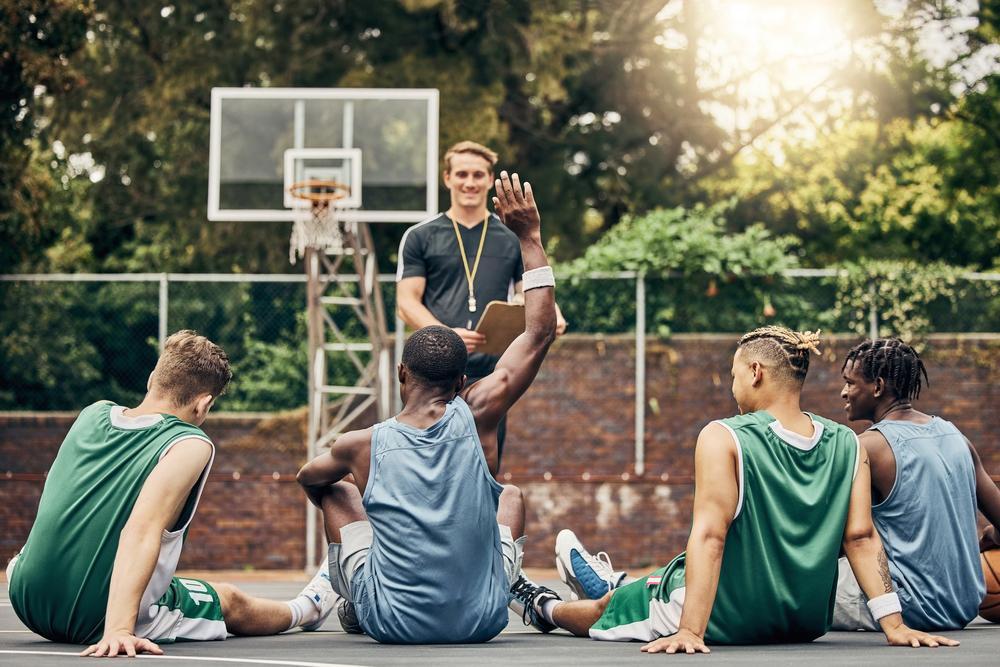Pierson is a 12-year-old hockey player who practices five to six days a week, travels to out-of-state tournaments, and captains his team. He also plays soccer. His goals? To have the best plus/minus ratio on his team, which means when he’s on the ice, his team scores more than they get scored on.
Riley is a 10-year-old swimmer who practices three days a week and has broken a handful of pool records. Her goal? To make a select traveling team and continue to gain speed.
Scott is a 9-year-old basketball player who practices three days a week and is learning his way through basic plays and around the court. His goal? To become a more proficient dribbler.
The Importance of Goals
 Anybody who works in corporate America, was on a high school volleyball team, or has run a 10K knows that goal setting is a proven way to arrive at the destination you desire. Even if you’ve never sat in a cubicle or sweated through a soccer practice, you likely know that to get from point A to point B, which is ten miles away, you have to travel there mile by mile—or even quarter-mile by quarter-mile.
Anybody who works in corporate America, was on a high school volleyball team, or has run a 10K knows that goal setting is a proven way to arrive at the destination you desire. Even if you’ve never sat in a cubicle or sweated through a soccer practice, you likely know that to get from point A to point B, which is ten miles away, you have to travel there mile by mile—or even quarter-mile by quarter-mile.
That step-by-step concept is a little more challenging for developing brains. Although young athletes certainly have goals, they might have trouble connecting the dots on how small changes can help them reach a big goal.
We talked to a panel of youth sport experts about how to help youth athletes set appropriate goals—and achieve them.
Six keys to setting good goals for youth athletes:
1. For most youth athletes, goals should be process-oriented: namely, what the athlete should individually focus on while practicing a skill. For example, Pierson can work on his speed on the ice, so he can get back to play defense when the puck is near his team’s goal; Riley can work on taking fewer breaths to increase her efficiency in the water; Scott can practice his dribbling in his driveway after school.
2. Try not to base goals around championships or outcomes of games because there’s so much that the athlete can’t control: weather, the ability of the other team, the mentality of his teammates. With the guidance of a coach, teams can certainly set collective goals, but individual athletes should focus on their own skills and mentality.
3. Let your athlete set their own goals or work with their coach to set some. When a parent sets the goals for the athlete, the ownership of the goal—and the joy the athlete feels when they achieve it—is significantly compromised. You can certainly prompt them—what skills do you think you’d like to improve on the soccer field?—but they get to fill in the blanks.
4. Realize that goals don’t all have to be athletically oriented. Maybe you could ask your child if they have some academic or social goals. Tackling a challenging book chapter by chapter is a great way to illustrate the patience, dedication, and hard work it takes to reach a goal. Frustrated by a last-place performance in the 100-meter butterfly in a big meet, Riley emerged from the pool in tears. She had been intimidated by the competition, and let it get the best of her. Her revelation based on that experience? “If I don’t go into a race with a smile, I won’t come out of it with a smile,” she says, “Smiling at competition is a new goal.”
5. Have your child write down their goals, and then have a discussion (again, they lead) about how they might reach them, helping them break them down into smaller chunks. In addition to thinking about what is appropriate for your child’s age, personality and ability, a good guideline is to make the goals or chunks SMART: Specific, Measurable, Attainable, Reasonable, and Timely.
6. Check in with your child on their goals periodically. If you saw your athlete realize a piece of their goal—or their entire goal—during practice or a competition, definitely compliment them. But don’t let the goal turn into a source of tension in your house, and if the goal seems to be fading into the background out of frustration or attention, gently ask your child about it. If need be, help them readjust it so they can taste success.
—
By: Dimity McDowell
A longtime sports + fitness writer who has written for ESPN: The Magazine, Sports Illustrated, and a range of other publications, Dimity McDowell is the co-founder of Another Mother Runner and the co-author of a trilogy of mother runner books. She lives in Denver with her husband, two kids, and one dog. Find her on Twitter @dimityontherun.



